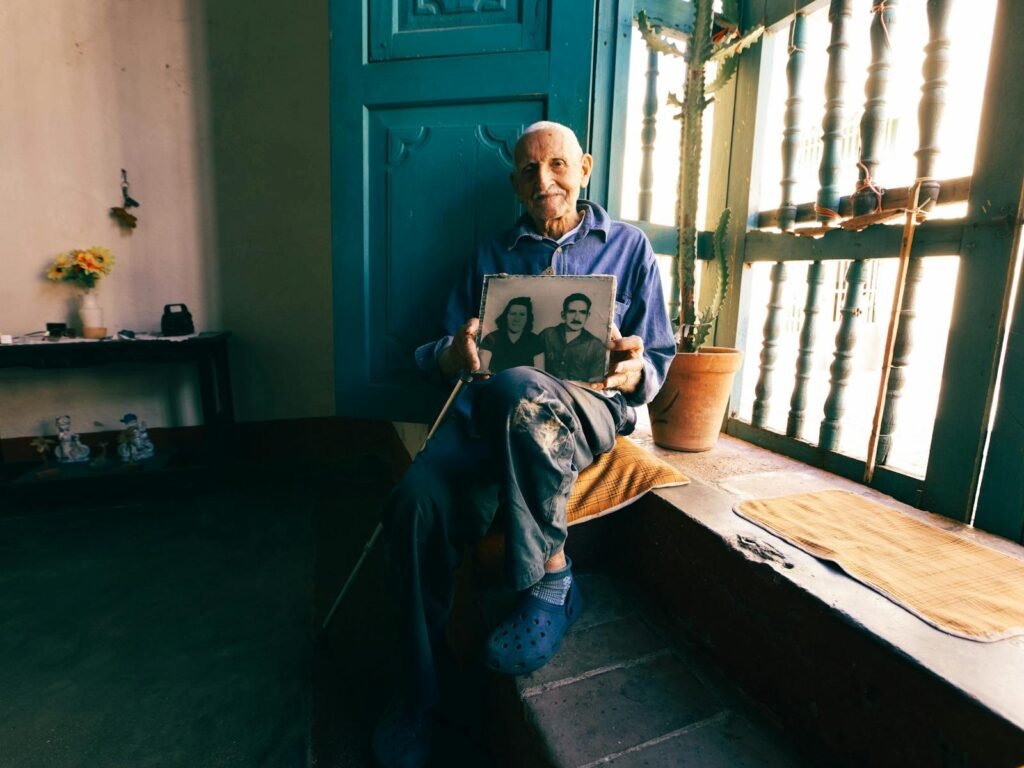Imagine stumbling upon a remote Appalachian community where, to your utter astonishment, some of the residents have skin that glows an unmistakable shade of blue. It seems straight out of a fairy tale—yet, this was a living reality for a family in Kentucky. Whispers of the “Blue People” swirled for generations, blending folklore with medical curiosity. Was it a rare and mysterious disease? Or could this bizarre trait be a window into the intricate dance of human genetics? The story of Kentucky’s blue-skinned family is more than a medical oddity—it’s a powerful reminder of how hidden threads in our DNA can shape our lives in the most unexpected ways.
Who Were the Blue People of Kentucky?
Deep in the hills of eastern Kentucky, the Fugate family became famous for their unusual blue-tinted skin. Locals called them the “Blue People of Troublesome Creek,” and their story dates back to the early 1800s. Legend has it that Martin Fugate, a French orphan with strikingly pale skin, settled near Hazard, Kentucky, and married a woman carrying a similar recessive gene. Their descendants, over generations, formed an isolated community, and the blue skin trait became more pronounced. The families living in these Appalachian hollers faced not just the physical oddity, but also the social stigma and curiosity from outsiders who could hardly believe what they saw. For the Fugates, being blue was not just a medical condition—it became part of their family identity, woven into the fabric of their lives.
The Science Behind the Blue Skin
The blue hue in the Fugate family wasn’t magic or myth, but a result of a rare genetic condition called methemoglobinemia. This condition affects how blood carries oxygen, turning the skin a distinctive bluish color. Normally, hemoglobin in red blood cells transports oxygen throughout the body. But in those with methemoglobinemia, a genetic mutation causes an abnormal form of hemoglobin—methemoglobin—to build up, which cannot carry oxygen as efficiently. As a result, the blood turns a chocolate-brown shade, making the skin appear blue. This scientific explanation was a breakthrough that replaced years of speculation and myth, finally providing clarity to the blue-skinned mystery.
How Genetics Played a Pivotal Role
The story of the Blue People is a textbook example of how recessive genes can persist in isolated populations. In the close-knit world of rural Kentucky, families often married within their small communities, sometimes even their own distant relatives. When two carriers of the methemoglobinemia gene had children, there was a chance their offspring would inherit the blue skin trait. The genetic odds stacked up over generations, making the condition far more common among the Fugates than in the general population. This is a classic case of the “founder effect,” where a small group of people with a rare genetic trait can pass it on and amplify it within a community through generations of intermarriage.
The Role of Isolation in Appalachia

The rugged, mountainous terrain of eastern Kentucky played a crucial part in this story. Isolated from larger towns and cities, the families living in Troublesome Creek had limited options for travel or new relationships. This isolation preserved not just traditions and dialects, but also rare genetic traits. As a result, the blue skin condition was passed down much more frequently than it would have been in a more diverse and mobile population. Life in these Appalachian valleys was hard, and the sense of community was strong. But the same factors that helped people survive also allowed rare conditions like methemoglobinemia to flourish.
Medical Detection and Diagnosis
For many years, doctors were baffled by the blue-skinned patients of Kentucky. It wasn’t until the mid-20th century that Dr. Madison Cawein, a determined hematologist, ventured into the hills to investigate. Armed with a curiosity and an open mind, he took blood samples and performed careful tests. Dr. Cawein’s breakthrough came when he identified the elevated levels of methemoglobin in the Fugates’ blood. His efforts not only solved a medical mystery but also brought hope and understanding to the families who had lived with the condition in secrecy and shame. Today, the diagnosis of methemoglobinemia is well-established, but it took decades of persistence to get there.
Treatment That Changed Lives

Once the cause of the blue skin was pinpointed, treatment became possible. Dr. Cawein discovered that a simple chemical antidote, methylene blue, could reverse the effects of methemoglobinemia almost instantly. Administered as a pill or injection, methylene blue returned the skin to a normal color within minutes. For the Fugates, this was nothing short of miraculous—a way to step out from the shadows and live without the stares and whispers. This breakthrough showed how medical science, fueled by curiosity and compassion, can transform lives in the most unexpected corners of the world.
Social Stigma and Community Reactions

Living with blue skin was more than just a medical issue—it shaped every aspect of daily life for the Fugates. Children faced teasing at school, and adults often endured suspicion or ridicule from outsiders. The family became both a curiosity and a cautionary tale, fueling rumors and tall tales across the region. Yet, within their own community, the Fugates found support and acceptance. Their neighbors knew them by name, not by color. The blue skin became a part of local lore, a symbol of uniqueness rather than shame. For the Fugates, resilience was as much a family trait as the blue hue itself.
Modern-Day Perspectives and Echoes
Today, descendants of the original Blue People are scattered across Kentucky and beyond. With advances in medicine, the condition is rarely seen—but the legacy of the Fugates lives on. Their story reminds us how easily genetic traits can hide in plain sight, waiting for the right combination of genes to reappear. It also highlights the power of community, perseverance, and scientific inquiry. Though the blue skin may have faded, the lessons from Troublesome Creek continue to inspire geneticists, historians, and everyday people who marvel at the wonders of human biology.
Lessons from the Blue People for Science and Society
The saga of the Blue People is more than a curious footnote in medical history. It’s a powerful illustration of the importance of genetic diversity, community support, and scientific investigation. Their journey shows us how isolated populations can become living laboratories, offering clues about genetics, inheritance, and human adaptation. At the same time, the Fugates’ experience warns against the dangers of stigma and the need for empathy in how we view those who are different. The story encourages us to look deeper, to ask questions, and to embrace the mysteries beneath the surface.
Could Similar Genetic Anomalies Be Hidden Among Us?
The case of the Blue People poses a tantalizing question: how many other rare genetic anomalies might exist, quietly passed down in isolated families or remote regions? With today’s technology, scientists are discovering new genetic conditions all the time—some with visible signs, others hidden deep within our DNA. The Fugates’ story is a reminder that even the most unusual traits can be explained by science, given enough curiosity and compassion. As genetic testing becomes more common, we may soon uncover even more hidden chapters in the book of human biology.
Reflection: The Legacy of the Blue People

The Blue People of Kentucky challenge us to rethink what it means to be “normal.” Their story weaves together the beauty of human variation, the power of scientific discovery, and the resilience of a close-knit community. It urges us to look beyond appearances and embrace the mysteries that make each of us unique. What other secrets might our genes be hiding, waiting for the right moment or the right question to reveal them?




